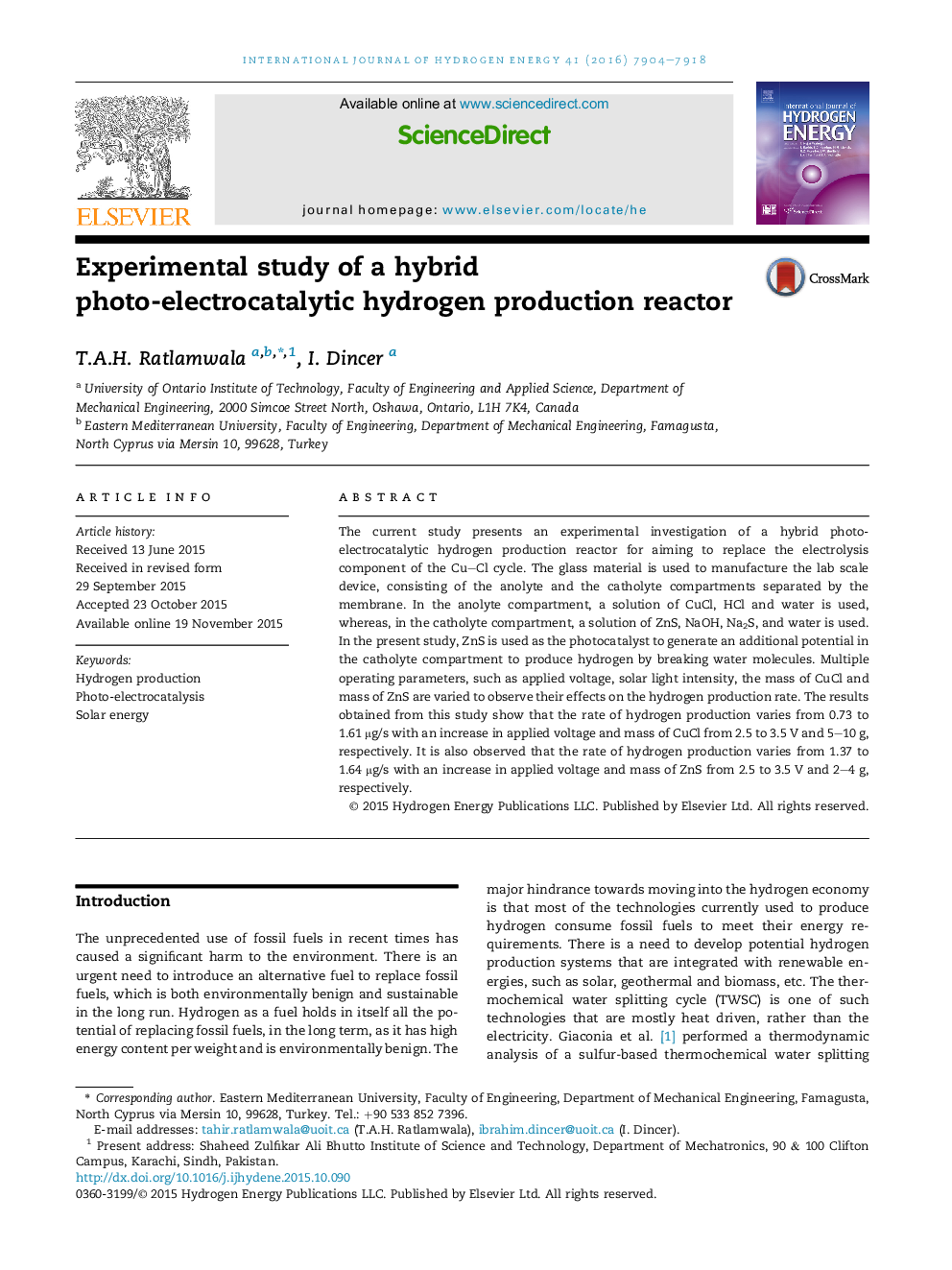| Article ID | Journal | Published Year | Pages | File Type |
|---|---|---|---|---|
| 1277284 | International Journal of Hydrogen Energy | 2016 | 15 Pages |
•An experimental study of a new hybrid photo electrocatalytic hydrogen production reactor is undertaken.•Zinc sulfide is used a photocatalyst.•A performance assessment of this new system is conducted for various operating conditions.
The current study presents an experimental investigation of a hybrid photo-electrocatalytic hydrogen production reactor for aiming to replace the electrolysis component of the Cu–Cl cycle. The glass material is used to manufacture the lab scale device, consisting of the anolyte and the catholyte compartments separated by the membrane. In the anolyte compartment, a solution of CuCl, HCl and water is used, whereas, in the catholyte compartment, a solution of ZnS, NaOH, Na2S, and water is used. In the present study, ZnS is used as the photocatalyst to generate an additional potential in the catholyte compartment to produce hydrogen by breaking water molecules. Multiple operating parameters, such as applied voltage, solar light intensity, the mass of CuCl and mass of ZnS are varied to observe their effects on the hydrogen production rate. The results obtained from this study show that the rate of hydrogen production varies from 0.73 to 1.61 μg/s with an increase in applied voltage and mass of CuCl from 2.5 to 3.5 V and 5–10 g, respectively. It is also observed that the rate of hydrogen production varies from 1.37 to 1.64 μg/s with an increase in applied voltage and mass of ZnS from 2.5 to 3.5 V and 2–4 g, respectively.
